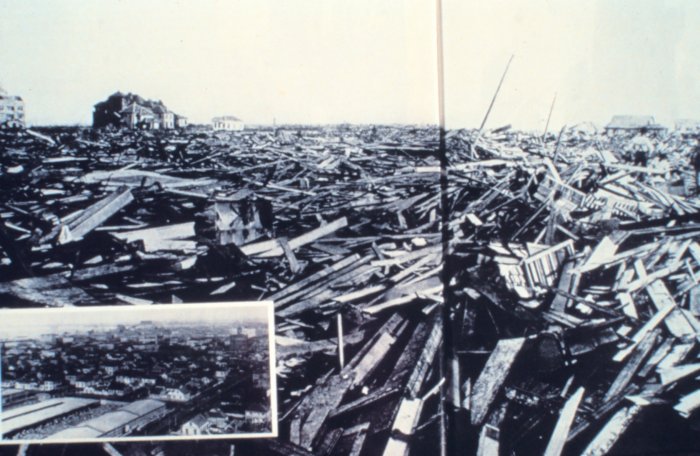The Great Galveston Hurricane

NWS Library
On September 7, 1900 in Galveston, TX, the head of the local Weather Bureau office, Isaac Cline, was worried.
The weatherman knew enough about the signs of an approaching hurricane to know that one was in the Gulf of Mexico.
But Cline’s superiors at the U.S. Weather Bureau in Washington believed that the storm which was headed right toward the low-lying city was actually hundreds of miles from its actual location and headed in a different direction.
The meteorologists had no idea what they were dealing with.
The Gulf of Mexico was like bath water, and the first hurricane of 1900 was drawing on the energy in those warm waters to become a monster. In less than 24 hours, it had gone from category one status to category four, with top winds of 145 mph. It was drawing a bead on the upper Texas coast…
On Saturday morning, September 8, 1900, the booming sound of huge breakers pounding the beaches of Galveston greeted the day.
As conditions deteriorated that morning, a telegram was transmitted from Washington at 9:35 am that Cline received at 10:30am. The telegram issued a storm warning for Galveston. The flag was raised at 10:35 am over the Weather Bureau office. But it was too late.
Cline sent his final message to Washington at 3:30 p.m. before the wires failed saying the Gulf was rising and that water covered half of the city.
By 5 p.m., the winds had reached hurricane force. By 8 p.m., the barometer had plummeted to nearly 27.50 inches. The anemometer blew away after winds reached 100 mph. The city was inundated with a 15 foot storm surge.
The category 4 hurricane caused at least 6,000 deaths to become the most deadly natural disaster in U.S. history.
Follow my weather history tweets on Twitter. I am wxhistorian at twitter.com
Category: Uncategorized















